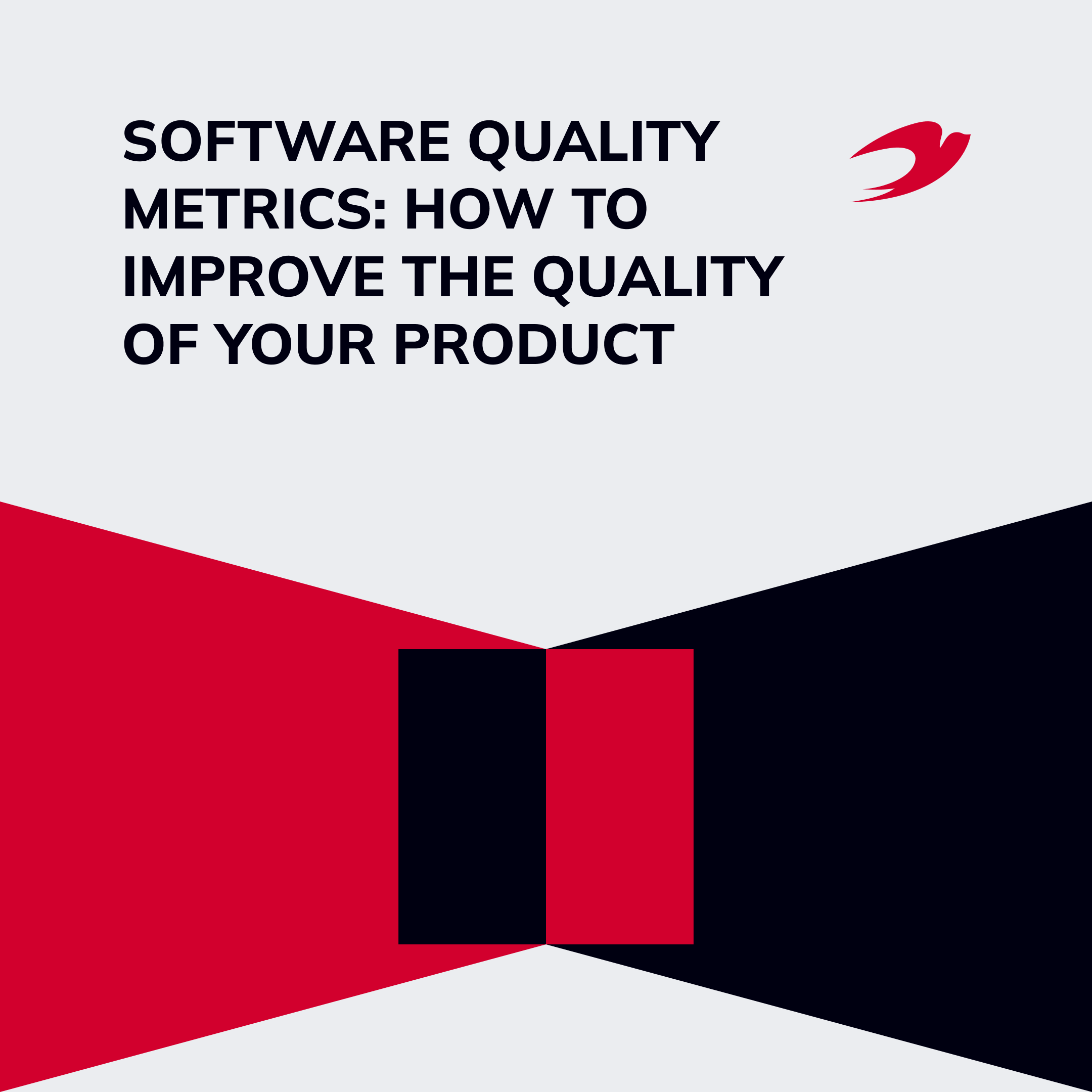Artificial intelligence has been taking over the web for several years. It is infiltrating both entertainment and work. It is loved and hated. Different companies and enthusiasts have written many AI-based programs, and each does its job.
Although many are more likely to think of various AI-based mobile apps that make anime out of photos, AI helps in QA testing. As you probably know, QA values the ability to reduce the time spent on tests. That’s why AI testing tools rank above manual testing in the “hierarchy” (although you can’t do without it completely). This article will discuss the top 10 AI tools for quality assurance automation.
How can AI tools for QA automation help improve the efficiency of testing cycles?
An effective AI QA tool can minimize manual effort and ensure efficient resource utilization. Talk to an expert and define which QA automation tools can streamline your QA processes!
Table of contents:
Top 10 AI Testing Tools
Here are the top 10 best AI tools for test automation you must be aware of. This list of best AI automation testing tools is based on the top-tier expertise of our Senior QA – Inna Kharytynych.
Testim
Testim is one of the most popular AI automation tools for testing. It uses AI to optimize test scenarios. It can record and replay test scenarios and then analyze the resulting data to automatically optimize and improve tests.
By using AI in QA automation, Testim can recognize and eliminate redundant and unnecessary steps in tests and automatically update tests when changes are made to the application. Using the record function, you can go through different steps in the application, and Testim will automatically generate the corresponding test scenario.
This is especially useful for testers without programming skills, as they can easily create and update tests without writing code. Testim also integrates easily with popular development tools like Jira.
Testim was crafted to be visually stunning, elegantly user-friendly, and exquisitely designed. Yet, within this realm of innovation, myriad analogs exist without AI.
Senior QA, Inna Kharytynych
TestCraft
TestCraft is a test automation extension that can be found in the Google Chrome store. It seamlessly integrates manual testers into the DevOps workflow, amplifying productivity across the testing team.
TestCraft is powered by GPT-4. Its main advantage is its code-free approach, which allows testers without programming skills to create and maintain tests. Users can create test scenarios by dragging, dropping, and connecting predefined action blocks using a visual editor.
TestCraft’s AI algorithms automatically optimize and adapt tests to work across platforms and browsers. This dramatically simplifies and speeds up the creation and maintenance of test scenarios.
Playwright
Playwright is a NodeJS library for test automation with a single API for different browsers (Chromium, Firefox, and WebKit). Microsoft developed it. In our opinion, Playwright’s main advantage is its close integration with browsers and its ability to interact with browsers on a level not available for Selenium.
For effective web development testing, Playwright replicates real-world user interactions, providing a comprehensive perspective on your application’s functionality. It is highly recommended for individuals with coding expertise who seek to evaluate browser compatibility for their websites.
With Playwright, you can effortlessly generate new browser pages and manage multiple tabs, leveraging browsing context to enhance user experience. Beyond its flexibility, this framework empowers you to seamlessly interact with webpage elements, maximizing productivity. Additionally, Playwright automatically generates unique URLs, saving you precious time that can be better utilized in other areas of development.
With the Playwright browser extension, you’re bestowed with convenient code snippets. They enable you to create automated tests through effortless copy-and-paste functionality.
Senior QA, Inna Kharytynych
Functionize
This platform uses machine learning (ML) to automate testing and predict defects. It allows you to create test scenarios based on accurate data and analyze test results.
Its mission is to simplify the often complex process of software testing. Catering to teams of all sizes and expertise levels, Functionize is committed to improving test creation, eliminating inconsistencies, and accelerating release cycles through scalable cloud-based testing.
With this solution, corporate teams can expedite software development by eliminating traditional test scripts, reducing test maintenance, and minimizing the need for extensive quality assurance resources. Functionize is a potent tool for QA specialists.
Mabl
It can generate tests from the contents of emails and PDFs, adapting as the UI of the application under test evolves as development progresses. The AI-based screenshot comparison feature attempts to mimic real-life visual UI testing to help detect unwanted UI changes.
In contrast, the link scanning feature autonomously generates tests covering available paths in the application, providing insight into broken links. This is awesome.
Mabl allows QA experts to update and debug tests without affecting the master version. API endpoints can be used to run Mabl tests, and there are plugins for CI/CD platforms, including GitHub, Bitbucket Pipelines, and Azure Pipelines. As for analytics, Mabl shows metrics that determine how well tests cover the application, identifying gaps based on statistics and interactive elements on the page.
Dynatrace
It is a performance monitoring tool that uses AI to automatically analyze issues. It helps to trace the impact of performance issues and proactively optimize applications. The main task of Dynatrace monitoring is to diagnose problems. Then, this data is passed on to the contractor to fix the error.
Dynatrace works around the clock and reports all anomalies on application software. These can be software delays both internally and from external services, errors in settings, code, and so on.
AI Davis, Dynatrace artificial intelligence, helps solve routine tasks. You don’t need to define and customize thresholds for when metrics should be triggered. The system already has the types of problem situations and reports on them. Instead of a flurry of notifications from all the services and applications affected by the problem, you get a single notification in the event of an incident.
Micro Focus Fortify
Micro Focus Fortify products deliver unparalleled static and dynamic application testing, along with cutting-edge application security monitoring and protection technologies backed by the latest research. Whether deployed on-premises or as a service, Fortify solutions offer a flexible, scalable application security solution tailored to the ever-changing demands of modern IT departments.
You can seamlessly integrate security testing, vulnerability remediation, secure development training, and expert support. Fortify’s security testing helps you quickly identify risks in applications, whether developed in-house or obtained from vendors.
Micro Focus Fortify supports 21 programming languages, including ABAP / BSP, ASP.NET, Python, and Ruby. It covers over 900 vulnerability categories listed in OWASP Top 10 and SANS Top 25 and is compliant with DISA STIG, PCI DSS, and other standards. Machine learning algorithms reduce the risk of false positives.
Rapid7
Rapid7 is a leader in vulnerability management and penetration testing solutions. It helps you gain a complete view of the security of your information infrastructure. Unlike traditional vulnerability assessment or incident management, Rapid7 provides security visibility across virtual, mobile, private, and public cloud networks.
Rapid7 Nexpose can integrate with Rapid7 Metasploit, a threat penetration testing solution, to comprehensively assess security risks in an organization’s IT infrastructure. By utilizing all the Rapid7 features with AI application testing best practices, QA processes can be significantly optimized.
ACCELQ
This is an AI testing tool that automates test writing, planning, and execution. It is suitable for UI, mobile, API, and desktop program testing, covering the whole QA domain.
ACCELQ revolutionizes test automation with its cloud-based, AI-powered platform that requires no coding. Offering seamless integration across various channels, including Web, Mobile, API, Desktop, and Backend, ACCELQ’s unified solution simplifies automation across the entire tech stack.
By prioritizing business process automation and adeptly handling real-world complexities, ACCELQ sets itself apart as a leader in Cloud & Packaged App Testing & Automation. It can ensure high-quality results without the need for extensive coding expertise.
Sauce Labs
This tool provides a cloud-based testing platform that supports functional testing of web and mobile applications. Testing on real devices and parallel execution with Sauce Labs combined with mobile app testing best practices is fantastic.
Sauce Labs redefines the testing landscape by offering low-code automated web testing services. It empowers QA testers to achieve the productivity levels of seasoned automation engineers.
Leveraging AI-powered systems, the tool facilitates the creation, composition, and complete automation of test suites, catering to individuals with limited to no programming background. This democratizes testing and cultivates a collaborative ecosystem where automation engineers can concentrate on code-specific facets of software development.
Choosing the Right AI Tool for Your Needs
To select the best AI testing tool, follow the tool selection process below.
Step 1: Determining the need for AI QA tools
You need to define your exact requirements for the AI-based testing tools, document them, and then give them to the team and management for review.
For example, the requirements for an AI QA tool might be as follows:
- The tool should automatically generate test cases.
- The tool should automatically execute test cases.
- The tool should generate test results in the desired format.
- The tester should be able to select which test cases to execute with a given set of data.
- The tool should be able to validate and evaluate the test results.
Once you have clarified the requirements for AI QA tools, you can move to assessing and evaluating different options.
Step 2: Evaluate AI-based test automation tools and their vendors
After determining the requirements for the QA tool, you should take the following steps:
- Analyze commercial and open-source projects currently available in the market and meet the requirements.
- Make a top list of AI testing tools.
- Evaluate the level of vendors that offer solutions from the top list (reputation, support level, frequency of tool updates, etc.).
- Work with the selected AI testing tools during the test period and evaluate them in practice.
This way, you can find the best AI-based test automation tools per your needs.
Step 3: Evaluate the cost and benefits
To ascertain the usefulness of an AI QA testing tool, you need to weigh the costs and benefits of implementing it. It may turn out that a tool that speeds up the testing process by 2 times in total costs 50% more than the salaries of the manual testers who currently perform these processes.
In such a case, it is necessary to consider other AI tools for software testing, including custom ones.
Step 4: Make the final decision
To make the final decision about the best option out of all the AI testing tools you have found, you should have the following:
- Complete information about the tool, its strengths and weaknesses.
- A balance of costs and benefits.
Even after a detailed study of the AI testing tool description and vendor information, it is necessary to try out the system in real work. When making a decision, it is essential to consider the opinion of the QA team.
The responsibility for making this decision is high because its impact on the results of the project as a whole can be both positive and negative.
Summary
Testing applications using artificial intelligence is a new and promising approach that allows you to reduce the time spent on test preparation and execution, improve software quality, and anticipate possible problems. Many companies also enhance their testing strategy by leveraging AI and ML development services to build smarter, more adaptive QA processes. Use the best AI automation testing tools described in this article to apply AI in your testing process and improve your work.
If your QA team lacks experienced QA specialists, you can turn to our IT outstaffing services. We at IdeaSoft have many senior QA experts in different domains.



